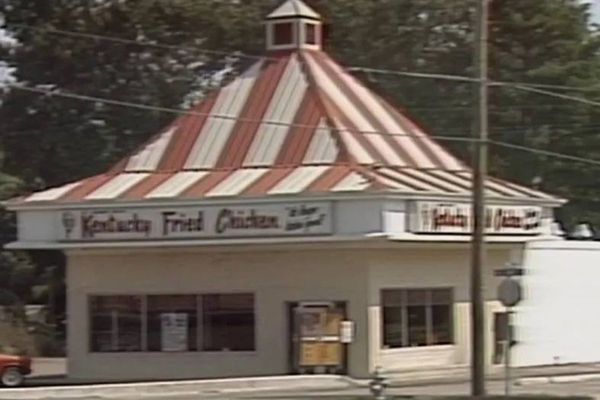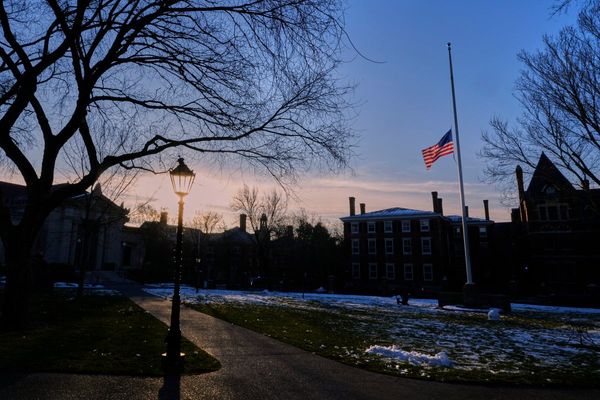
Tuesday's weather forecast calls for more rain across the US Plains and Midwest, likely improving the REAL conditions of the 2025 corn, soybean, and spring wheat crops.
-
Speaking of conditions, NASS released its latest Kardashian numbers Monday afternoon, to the amusement of those of us who recognize how stupid the process is.
Don’t Miss a Day: From crude oil to coffee, sign up free for Barchart’s best-in-class commodity analysis. It's interesting to note this year's Kardashian numbers actually fit with what futures spreads have been showing us about REAL supply and demand expectations this spring and summer.

Morning Summary: A look at today’s weather forecast and most of the US Plains and Midwest are expected to see rain Tuesday, with the day turning stormy for parts of the Northern Plains and upper Midwest. I know some meteorologist and members of the BRACE Industry keep banging the little toy drought drum, but I’ll say this has to be one of the wettest “droughts” in memory. Recall last Thursday’s US Drought Monitor Map showed readings had largely vanished east of the Missouri River, the exception being an abnormally dry area stretching across northern Illinois into northwest Indiana. That being said, Nebraska has taken the baton from Kansas this year and continues to show readings to some degree generally from border to border. I was visiting with a friend from the south-central part of the state Monday, and as he put it, crops there are surviving from drop to drop with little soil moisture to fall back on. What I’m about to say will likely make you spit out your morning coffee: (Are you ready?) For what it’s worth – basically nothing – NASS’ Kardashian[i] Updates (weekly crop progress and condition numbers) actually reflect the idea Mother Nature has cooperated this year.

Corn: I’m going to take another shot of whatever adult beverage I can find and continue this discussion of the latest Kardashian numbers. If we turn them into an index, meaning we have absolutely nothing better to do with our time or our lives, this week’s round results in an index of 196 points[ii] (slide 2), unchanged from last week and the highest at this point of the summer since 2018’s 199 points. What does this mean for yield potential? Nothing. Despite what all the systems that use these fictitious numbers to generate yield projections try to tell us. As I’ve long said, it makes no difference what those yield projections are. The only thing that matters is how the commercial side of the market views new-crop supply and demand. Here we can look at the trend of futures spreads in regard to how much calculated full commercial carry is covered week to week. A look at the chart (slide 3) shows clear downtrends (higher percent) across the board, telling us the commercial side continues to grow more comfortable with supplies in relation to demand, whatever those unknown variables turn out to be. For the record, both September (ZCU25) and December (ZCZ25) futures contracts are down about 3.0 cents at this writing and at or near overnight session lows.

Soybeans: Time for another shot. Okay, let the Kardashian discussion continue. The latest weekly nonsense from NASS gave us a soybean index of 182 points (slide 4). If we want to continue to pretend reality doesn’t matter, then we can say this is the highest index figure for this point of the summer since 2020’s 188 points. We could also say this is a contra-seasonal move as the soybean index tends to show the Browning Effect[iii] from Week 1 through Week 16. I dug back through the pile of poo that is NASS’ numbers and could not find a year when the index increased like it has this summer. What does this mean for the 2025 US crop? Absolutely nothin’ (Say it again…). What we do know, though, is 2025-2026 futures spreads have continued to cover more calculated full commercial carry this spring and summer (slide 5). The spotlight has been on the North American November-January and South American March-May spreads. Both covered their highest levels of calculated full commercial carry at last Friday’s close. What else needs to be said about market fundamentals? Pre-dawn Tuesday finds the November futures contract (ZSX25) down 3.25 cents after slipping as much as 4.5 cents overnight on light trade volume of roughly 13,000 contracts.

Wheat: While we can’t talk about wheat conditions at this time, for the most part, that doesn’t stop NASS from coming up with equally stupid numbers for “crop progress”. Here we see winter wheat harvest continues to plug along, supposedly 63% completed as compared to the 5-year average of 64%. Do agents actually go out and check to see how much is done? What do you think[iv]? As we know, none of it matters. If we apply the Wheat Reality - One bushel of wheat left over is too many - then we know whatever is being harvested only adds to cumbersome US supplies. Monday evening’s National HRW Wheat Index ($CRWI) came in at $4.7075 putting available stocks-to-use at 45.5% as summer nears its midpoint. The previous 10-year end of July average is 43.2% with this year’s figure the largest since 2020. So far. Additionally, Monday evening’s calculation put the Index in the lower 9% of its price distribution range dating back through that same 2020. If we apply the simple economics Law of Supply and Demand where market price is the intersection of supply and demand curvess, then we know quantities available continue to gain on quantities demanded. September HRW was down 2.5 cents at this writing.
[i] I call NASS’ weekly nonsense this because like the Kardashian Clan, by NASS’ own admission, the numbers “have problems but will continue to be released because they are popular”. Also, as I was told by NASS officials after a heated meeting, it’s not them who tells the public these numbers are important.
[ii] Based on a scoring system I came up with many years ago, just for fun rather than science: NASS’ Excellent number x 4, Good x 2, Fair x 1, Poor x (-1), Very Poor x (-3)
[iii] The Browning Effect tells us NASS’ Kardashian numbers tend to go down as the crop matures or turns brown. Regardless of how good/bad the crop actually is, as it turns brown it doesn’t look as healthy. It was this series of charts that seemed to upset the NASS officials most at our meeting, and what eventually led to the “we know there are problems…” quote at a different meeting.
[iv] I can tell you they do not. A group of agents from Iowa once pulled me aside and told me the process runs something like this: Early Friday afternoon, shortly before offices close for the week, the previous week’s numbers are pulled up, what is remembered of the past week’s weather is applied, and the new week’s number is imagined and sent up the line. Quite scientific, right?
On the date of publication, Darin Newsom did not have (either directly or indirectly) positions in any of the securities mentioned in this article. All information and data in this article is solely for informational purposes. For more information please view the Barchart Disclosure Policy here.






